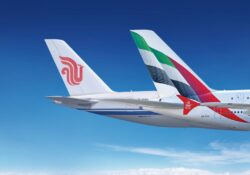– focus on delivering the experience to keep faith with loyal customers
There is a fine line between price shoppers attracted by enticing offerings and loyal customers. Lessons from strategy point to the great effort and energy businesses put into maintaining customers and preventing them from switching. Here is a personal experience I can share and won’t be surprised if it is still happening. Years ago in the UK, I noticed that towards the end of each year, there were enticements from utilities to convince customers to switch. So attractive were the enticements I recall personally falling for a few and switching accordingly. However as attractive as the offers were one soon found out that they were only a mirage.
Once you crossed the threshold of “special price offerings” which could be up to 3 months or so you soon found out that slowly and steadily you were dropping back into the slippery slope of unfriendly billing. Many of these utilities are now offering Customer Experience (CX) initiatives at touchpoints to make life easier for customers. For example, on introducing water meters the utilities have invested massively into convincing their customers to switch to water meters to save cost. Furthermore, they have provided information on how to work out one’s bill and project usage over time. Offering a helping hand has made the customers feel more comfortable.
I bring up the utility conversation to illustrate how frustrating it is to deal with some of our local utilities. If CX was their focus they could make life a little more comfortable for patrons. Today, many businesses in their quest to grow market share focus more on the obvious, for example, many will go for pricing to keep their customers rather than improving the experience. In Jill Griffin’s book, Customer Loyalty, the quest to increase market share as opposed to improving the experience according to her has become commonplace. The desire to focus only on customers who are interested in favourable pricing may not lead to loyalty.
However, contrary to popular opinion it is still very possible to earn customers’ loyalty in today’s world. The avenues to achieve this are limitless with technology being a major catalyst in this endeavour. The Internet and technology advancements present new and innovative ways to manage customer relationships. Be that as it may, we must accept the reality that a high level of customer satisfaction does not necessarily translate to repeat purchases and increased sales. According to research by Deloitte in 2021, one of the most common problems brands face in 2021, is customer attrition
According to Deloitte in global markets, the churn rate is as high as 30% and the reasons for a high customer attrition rate could be many, but the most common reason is a lack of loyal customers. Customer loyalty is alive and well. Dell has proved that this is achievable if you are deliberate about it. Its Customer Advisory Council manages a forum for customers and technical leaders to interact with Dell’s product groups. Customers can find out about technologies and features that Dell is evaluating for inclusion in future products.
The sessions are a forum for customers to provide feedback about their interest level in utilizing these platforms and capabilities. It also provides the Product Group an opportunity to learn about business challenges and technology choices being made by customers so future products can be better tuned to address specific needs. According to Griffith (2002), there are effective ways to make many happy returns. First, measure customer loyalty and de-emphasize customer satisfaction. Second, aim at loyalty shoppers, not price shoppers. Third, reward loyalty. Fourth, loyal customers are synonymous with loyal employees.
Loyalty vs Customer Satisfaction
Receiving a high score on your Net Promoter Score (NPS) and Customer Satisfaction (CSAT) systems, may indicate that your customers are satisfied with your product and service however the question to ask is, how many of these customers have remained loyal to your brand? According to researchers, there is a fine line between a satisfied customer and a loyal one. CSAT depicting customer satisfaction is subjective. Customer satisfaction levels may vary, when you buy a product from a well-known brand in comparison to one from a lesser-known brand you will naturally have higher expectations. No two customers will measure the same in that sense.
Loyalty is more about emotions than rational judgment though they both may come into play. This makes satisfaction temporary and non-exclusive. Customers may be satisfied by more than one brand at the same time but it doesn’t mean they are loyal to either of these brands, let alone become repeat purchasers. According to researchers’ loyalty is influenced by many factors. It is a by-product of meaningful engagement, mutually beneficial brand-customer relationships, and a bond that is more than just transactional in nature. The driving factor in loyalty is the emotional connection.
Customers are emotionally attached to brands that they find either aspirational, trustworthy, reliable, or add value to their lives in some way or the other. There is a colleague of mine who has stated unequivocally that he will not buy any other phone brand apart from the iPhone. His assertion is that Apple puts great care into providing a user experience that’s fit for purpose. To the extent that they are prepared to spend time with their loyalists even if that means turning off others. It is about allowing the consumer to choose the experience that’s right for them, in other words, they go to lengths to deliver personalized services.
According to experts two conditions associated with loyalty are customer retention and total share of customers. Customer retention is the length of a relationship with a customer. It is the percentage of customers who have met a specified number of repurchases over a finite period of time. Discovering the fine line between retention and sharing of customers hinges on your ability to keep customers fully engaged with your brand. In some cases although they are engaged with your brand you find that they are also at the same time patronizing =other brands when it comes to acquiring add-ons. Securing loyalty will depend on how you manage relationships in these two areas.
Loyalty vs Price Shoppers
Notice that the principle behind a good customer experience strategy from the perspective of the business is the ability to empathize with the needs of the customer. When you attempt to assess the customer’s needs on your own without taking the trouble to find out from them you run the risk of what is known in CX terms as “navel-gazing”. Knowing what we know now about how customers respond (mostly irrationally) to brands we do ourselves a disservice by speculating the customer’s needs as opposed to consciously listening to them to understand those needs. The following example is an apt illustration of the above.
In the 1980s three major brands in the coffee market found themselves in a battle for the attention of customers in the coffee market. The companies were Folgers, Maxwell House, and Hills Brothers. Each one of them had a third of the market and loyal consumer franchises. One of the companies decided to implement an aggressive promotion plan to stimulate trial purchases among drinkers of competitive brands. Using coupons to stimulate switching they influenced the market with a price sensitivity strategy. The other brands reacted to this strategy resulting in a loss of interest in coffee as a commodity.
In the process, these brands lost loyal customers. This incident reminds one of the dog and the bone, on seeing its reflection in the water decided to go for the second bone ….. The companies in question unwittingly turned created a near-perfect environment for Starbucks to emerge. Looking closely at what was missing in the market, Starbucks under the leadership of CEO Howard Schultz filled that gap in the market by creating coffee enthusiasts and creating a unique way to address their needs. Unsurprisingly the barista at A local Starbucks is so friendly and resourceful that it’s hard not to strike up a conversation with her.
That is because relationship-building is part of Starbucks’ core values. According to Starbucks’ mission and values statement, “When we are fully engaged, we connect with, laugh with, and uplift the lives of our customers — even if just for a few moments”. Starbucks’ coffee bar is carefully designed to appeal to a coffee lover’s 5 senses. The store’s rich aroma, married with flavoured coffee, browser-friendly displays, beautiful music, and relaxing tables and chairs present real value to the average customer, not price promotion, and ultimately this has won them customer loyalty.
Rewarding Loyalty
Loyal customers reward you by staying with you over the long term to enable you to benefit from their cumulative purchases. The longer a customer stays with you the more profit the business makes from this customer. For example, the expected profits over a four-year period for the auto service customer could more than triple that generated by that same customer in the first year of engaging with you. Here are a few advantages we derive from loyal customers according to expert opinion. First, reduced marketing costs (customer acquisition costs are much more expensive). Second, lower transaction costs e.g. contract negotiation and order processing.
Third, reduced customer turnover expenses (you have fewer lost customers to replace). Fourth, increased cross-selling success leads to a larger share of customers. Fifth, more positive word of mouth and assuming loyal customers are also satisfied. Sixth, reduced failure costs (reduction in rework and warranty claims). This underscores the massive advantage a business enjoys if its loyal customer base is significant. Happy and satisfied customers continue to buy from you, spend more than others, are less likely to leave, and are more likely to turn into advocates for your company.
New customers tend to cost more to acquire and don’t spend as much money as loyal customers. Here are a few characteristics of a good loyalty programme. It focuses on the customer experience, therefore, having an effective way of measuring the customer experience is a worthwhile undertaking. An effective loyalty programme is best achieved with the effective use of data. By integrating data into the entire business you set the stage for customer visibility to enable you build credibility with them by rewarding their loyalty.
Be creative about how you roll out your loyalty programme to excite customers at a reasonable cost. Figure out what programme you want and design a business model around it. That will allow more creativity in coming up with funding and loyalty benefits. Starbucks sells many products outside of its retail locations, including coffee beans, tea, K Cups, and ready-to-enjoy drinks. and Exclusive Gold Card. When a member of the Starbucks program gets 30 Stars in a 12-month period they achieve “Gold Level” status.
This comes with some great perks including free refills on ice or brewed coffee, free refills on tea, free food and drink offers, and most importantly the personalized gold card.
Loyal Employees vs Loyal customers
Customer experience is emerging as the key driver of growth and a key differentiator for brands that do it well. But it can’t be an afterthought. Great customer experience should be woven into the very fibre of your business. The key is to develop a system that enables you to build world-class customer experience into your company culture. Identify your mission and goals, craft and align your customer experience vision, implement best practices, and create a winning customer experience framework. Plus, find out how to continually evaluate and refine your strategy so you can always deliver the optimum experience.
Your goal is to create happier customers, more committed employees, and a brand that grows loyalty, profits, and revenue. More importantly, when a company is spending less to acquire new customers it can afford to pay employees well. Frederick F. Reichheld the American best-selling author, speaker, and business strategist says “Increased pay helps boost employee morale and commitment; as employees stay longer, their productivity rises and training costs fall, employees’ overall job satisfaction combined with knowledge and experience, leads to better service to customers;
Customers are then more inclined to stay loyal to the company, and as the best customers and employees become part of the loyalty-based system, competitors are inevitably left to survive with less desirable customers and less talented employees. It turns out that customers tend to become loyal when they develop personal relationships with salespeople. The reality is that training a new employee cost both time and money. During the training period and for the time following, the employee is not functioning at maximum efficiency. Retaining a good employee results in improved loyalty both inside and outside the company.
The way managers and leaders interact with subordinates and associates will impact the way all employees behave toward customers. customers encounter two personalities. The person who serves them, the organization – the personality of the organization is called its “culture”. The number one task of every individual regardless of their job title, will always be to attract, satisfy and preserve loyal customers.
| The Writer is a Management Consultant. He can be reached at 059 175 7205, [email protected], |










